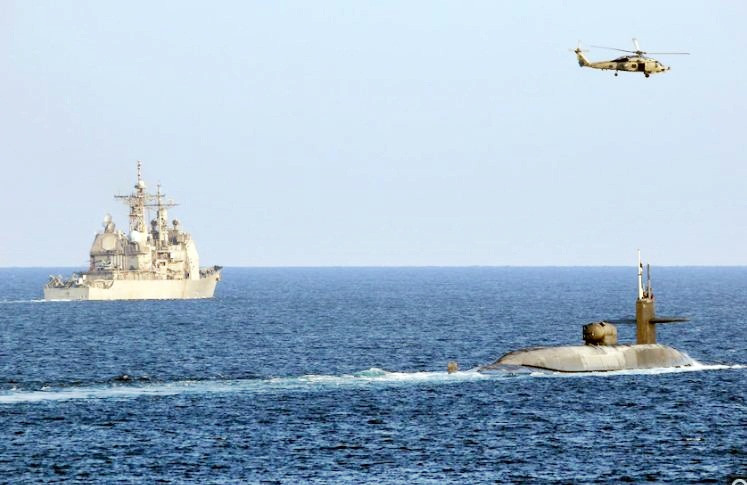The United States is set to enhance its submarine force at a key military hub in the Western Pacific to counter China's growing naval capabilities. The Virginia-class submarine USS Minnesota will be relocated from Hawaii to Guam at the beginning of the new fiscal year on October 1, as confirmed by Lt. Cmdr. Rick Moore, spokesperson for the U.S. Pacific Fleet commander's principal adviser on submarine affairs, according to Newsweek.
Guam's strategic location makes it a critical component of the U.S. defense strategy, especially within the context of the second island chain-a Cold War-era defense concept designed to limit China's naval and air activities. This redeployment responds to China's rapid naval expansion and its increasing operations far from its shores, including recent activities that have extended Chinese naval reach beyond the first island chain to the Bering Sea near Alaska.
The USS Minnesota, a nuclear-powered, conventionally armed cruise missile fast attack submarine, will be the first of its class to be permanently stationed in Guam. This decision follows the completion of planned maintenance at Pearl Harbor, where the submarine is currently based. The Virginia-class submarines, in service since the early 2000s, are known for their enhanced warfighting capabilities, including coastal operations, anti-submarine warfare, and intelligence missions. Armed with Mark 48 torpedoes and capable of launching up to 12 Tomahawk land-attack cruise missiles, the USS Minnesota represents a significant enhancement to the U.S. naval force in the region.
"The Navy routinely assesses its overseas force positioning, to include forward-deployed naval force submarines homeported in Guam," Moore stated. "We are committed to posturing our most capable platforms to preserve peace and stability in the Indo-Pacific region."
Guam's proximity to the Taiwan Strait and the contested waters of the East and South China seas-approximately 1,500 to 1,700 miles-makes it an ideal staging area for projecting American sea power. However, this strategic location also places Guam within range of Chinese intermediate-range ballistic missiles, highlighting the complex balance of power in the region.
Bryan Herrin, a former Navy submariner, emphasized the critical importance of Guam's location for U.S. naval operations. "The strategic location of Guam has significant military importance for the U.S. Navy, so being able to forward deploy, maintain, and reload our most modern submarines there is critical," he told Newsweek.
Currently, Submarine Squadron 15 at Naval Base Guam hosts four older-generation Los Angeles-class submarines. The arrival of the Virginia-class USS Minnesota marks the beginning of a transition that will eventually see these older vessels replaced. This move is part of a broader strategy to ensure that the most advanced and capable platforms are positioned to respond to potential threats in the Indo-Pacific region.
China has expressed strong opposition to the U.S. bolstering its military presence in the Asia-Pacific. "China is gravely concerned about the U.S. strengthening forward military deployment in the Asia-Pacific to seek unilateral military advantage," said Liu Pengyu, a spokesperson for the Chinese Embassy in Washington, D.C. "We urge the U.S. to earnestly respect other countries' security concerns, stop provoking confrontation and escalating tensions, and concretely preserve peace and stability in the Indo-Pacific region."






